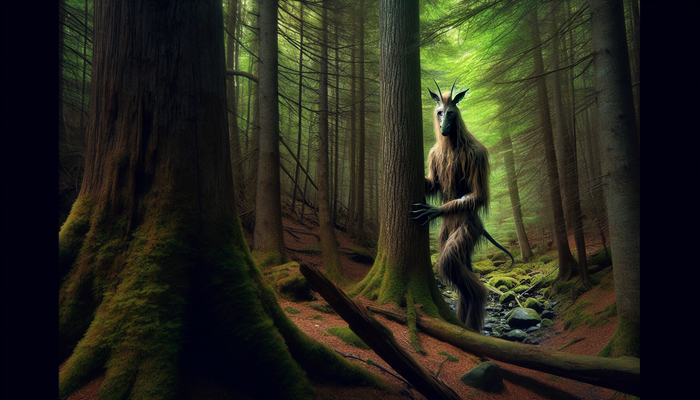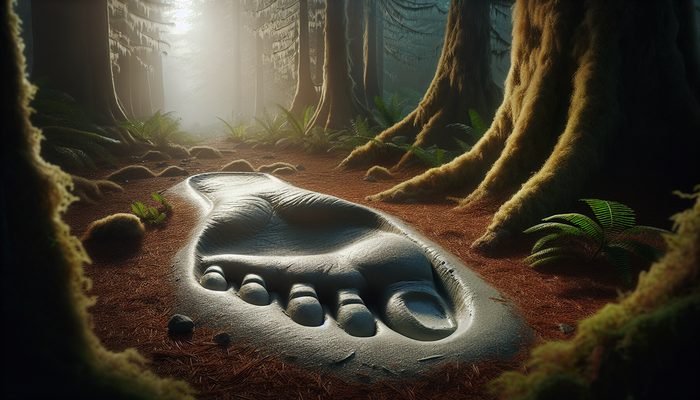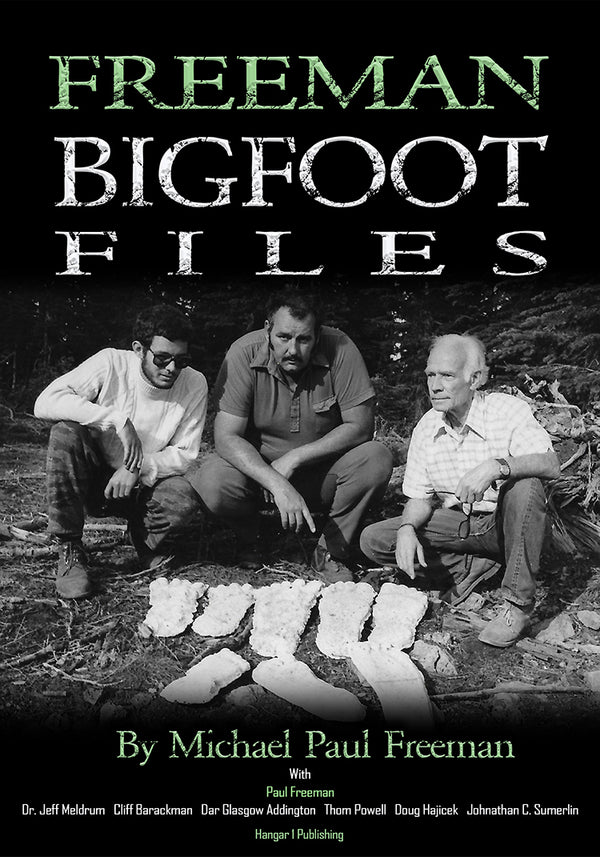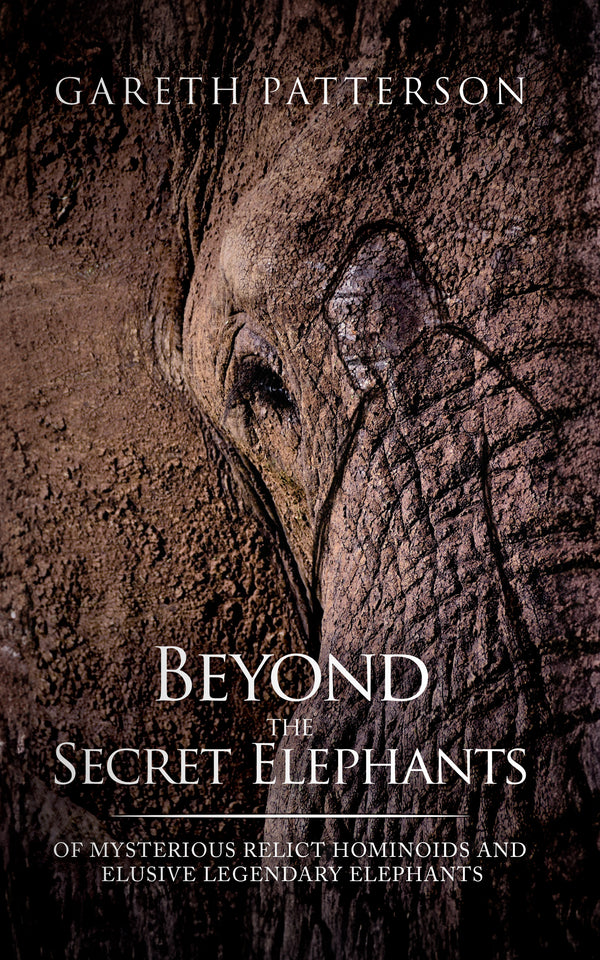Mysteries of Oklahoma's Legendary Bigfoot

By Ava Martinez, Cryptozoologist
In the realm of cryptozoology, few creatures have captured the human imagination as profoundly and persistently as Bigfoot, also known as Sasquatch. This elusive, ape-like being has been the subject of countless tales, sightings, and debates, sparking both fascination and skepticism across the globe. While Bigfoot legends permeate the folklore of many regions, the state of Oklahoma stands out as a particularly rich and intriguing hotbed of Sasquatch activity.
As a biology teacher and passionate cryptozoologist, I have long been captivated by the enduring mystery of Bigfoot. My quest to unravel the truth behind this legendary creature has led me to explore the dense forests, rugged mountains, and hidden corners of Oklahoma, a state with a deep-rooted history of Bigfoot encounters. Through extensive research, interviews with eyewitnesses, and collaboration with local experts, I have discovered that Oklahoma's Bigfoot phenomenon is far more than a mere myth or tourist attraction; it is a complex tapestry woven from indigenous folklore, early settler accounts, modern sightings, and ongoing scientific inquiry.
In this article, I invite you to join me on a journey through the rich history, cultural significance, and contemporary manifestations of the Bigfoot legend in Oklahoma. Together, we will explore the state's unique position as a nexus of Sasquatch activity, delving into the stories, evidence, and theories that have shaped this enduring mystery. From the ancient tales of the Choctaw and Cherokee tribes to the thriving Bigfoot tourism industry of today, we will examine the many facets of Oklahoma's Bigfoot phenomenon, seeking to shed light on the truth behind the legend.
The Deep Roots of Bigfoot in Oklahoma
To fully appreciate the significance of Bigfoot in Oklahoma, we must first explore the creature's deep roots in the state's indigenous folklore and oral traditions. Long before European settlers arrived in the region, the Choctaw and Cherokee tribes had stories of a mysterious "man-beast" or "wild man of the woods" that roamed the dense forests and rugged mountains of what is now southeastern Oklahoma.
In these ancient tales, the Bigfoot-like creatures were often depicted as highly intelligent beings, capable of communicating with humans and even sharing their knowledge of hunting and survival skills. The Choctaw, for example, spoke of the "Shampe," a large, hairy, man-like creature that was said to inhabit the remote wilderness areas of their homeland. Similarly, the Cherokee had stories of the "Tsul 'Kalu," a powerful, ape-like being that was both feared and revered by the tribe.
Interestingly, some of these indigenous legends suggest that the Bigfoot creatures may have traveled with the tribes during the tragic Trail of Tears in the 1830s, when the Choctaw, Cherokee, and other tribes were forcibly relocated from their ancestral lands to present-day Oklahoma. This idea of Bigfoot migrating alongside indigenous peoples adds a fascinating layer to the creature's history in the state, hinting at a deep, symbiotic relationship between the Sasquatch and the land's original inhabitants.
As European settlers began to explore and colonize the region in the 19th century, they too encountered strange, ape-like creatures that defied explanation. One of the earliest recorded Bigfoot sightings in Oklahoma dates back to 1849, when a hunter and trapper known as "One-Eyed Bascomb" claimed to have seen a "strange critter" with long arms and a stooped posture in the swamps near the town of Eagletown. Bascomb's account, preserved in the diary of Bertrand Tonihkah, offers a tantalizing glimpse into the early history of Bigfoot encounters in the state.
In the early 20th century, sightings of large, hairy, bipedal creatures continued to emerge from the forested regions of southeastern Oklahoma. In the 1920s, a doctor from the town of Haworth reported seeing a shaggy, ape-like being dart across the road near Goodwater, while a pair of hunters claimed to have spotted a "big, black, hairy ape-man" along the Mountain Fork River. These early accounts, along with the indigenous folklore, laid the foundation for Oklahoma's enduring Bigfoot legend, setting the stage for the countless sightings, investigations, and theories that would follow in the decades to come.
Southeastern Oklahoma: A Bigfoot Hotspot
As the Bigfoot legend grew in Oklahoma, one region, in particular, emerged as a hotspot for Sasquatch activity: the rugged, heavily forested terrain of the Kiamichi Mountains in the southeastern part of the state. This vast, sparsely populated wilderness, with its dense oak and pine forests, winding rivers, and hidden valleys, provides an ideal habitat for a large, elusive creature like Bigfoot to thrive.
The Kiamichi Mountains, which span several counties in southeastern Oklahoma, have long been a source of fascination and mystery for Bigfoot enthusiasts. The region's remote, inaccessible nature, combined with its rich history of Sasquatch sightings, has made it a prime destination for researchers, investigators, and curious adventurers seeking to unravel the truth behind the legend.
One of the most notable Bigfoot encounters in the Kiamichi Mountains occurred in the early 2000s, when a local man named Charles Benton had a terrifying face-to-face encounter with a massive, reddish-brown Sasquatch while turkey hunting near the town of Honobia. Benton, a seasoned outdoorsman and native of the area, described the creature as standing well over eight feet tall, with a large, sloping forehead and an impossibly broad chest. The encounter, which lasted only a few heart-stopping seconds, left Benton shaken and forever changed his perspective on the existence of Bigfoot.
Benton's story is just one of many that have emerged from the Kiamichi Mountains over the years. Residents and visitors alike have reported hearing strange vocalizations, howls, and wood knocks echoing through the forest, as well as finding enormous footprints and other physical evidence of Sasquatch activity. These reports, combined with the region's rich history of indigenous folklore and early settler accounts, have cemented the Kiamichi Mountains' reputation as a Bigfoot hotspot.
At the heart of this Bigfoot activity lies the small town of Honobia, nestled deep in the mountains. Honobia has embraced its status as the epicenter of Oklahoma's Bigfoot phenomenon, hosting an annual Bigfoot festival that draws thousands of enthusiasts, researchers, and curious onlookers from across the country and around the world.
The Honobia Bigfoot Festival, which began in 2005, has grown into a major event, featuring guest speakers, vendor booths, live music, and even guided expeditions into the surrounding wilderness in search of Sasquatch evidence. The festival has become a gathering place for the Bigfoot community, providing a platform for researchers to share their findings, eyewitnesses to tell their stories, and skeptics to engage in lively debates about the creature's existence.
Beyond the festival, Honobia and the surrounding communities have become a hub for Bigfoot research and investigation. Local residents, many of whom have had their own encounters with the creature, often work closely with researchers and organizations to document sightings, collect evidence, and explore the vast wilderness of the Kiamichi Mountains in search of answers.
As the Bigfoot legend continues to grow in southeastern Oklahoma, drawing in more researchers, tourists, and true believers each year, the Kiamichi Mountains remain at the heart of the mystery. With its rugged terrain, dense forests, and rich history of Sasquatch activity, this remote corner of the state has become synonymous with the search for Bigfoot, offering a tantalizing glimpse into a world where the line between myth and reality blurs, and the possibility of discovering something truly extraordinary seems tantalizingly close at hand.
The Bigfoot Phenomenon Across Oklahoma
While the Kiamichi Mountains and the town of Honobia may be the most well-known hotspots for Bigfoot activity in Oklahoma, the Sasquatch phenomenon is by no means limited to the southeastern corner of the state. In fact, Oklahoma ranks an impressive 7th nationally for reported Bigfoot sightings, with encounters and investigations spanning from the panhandle to the eastern border.
One of the most active organizations in the state is the Mid-America Bigfoot Research Center (MABRC), based in the northeastern region of Oklahoma. Founded by cryptozoologist D.W. Lee, the MABRC has been at the forefront of Bigfoot research and investigation in the state for over a decade.
Lee, a native Oklahoman with a deep passion for the Sasquatch mystery, has had his own personal encounters with the creature, which he says have driven his quest for answers. In one particularly memorable incident, Lee and a group of fellow researchers were conducting a night investigation in a remote area of the state when they heard a series of powerful, guttural vocalizations that they believe were made by a Bigfoot. The experience, which left the team both exhilarated and unnerved, only fueled Lee's determination to unravel the truth behind the legend.
The MABRC's approach to Bigfoot research is multifaceted, combining traditional field investigations with cutting-edge technology and scientific analysis. The organization's team of experienced researchers and investigators conduct regular expeditions into the forests and mountains of Oklahoma, searching for physical evidence of Sasquatch activity, such as footprints, hair samples, and nest structures.
In addition to their fieldwork, the MABRC also works closely with local law enforcement agencies and government officials to investigate reported Bigfoot sightings and encounters. This collaborative approach has helped to lend credibility to the organization's work, as well as to raise awareness about the Bigfoot phenomenon among the broader public.
Another key player in Oklahoma's Bigfoot research community is the Native Oklahoma Bigfoot Research Organization (NOBRO), founded by Troy Hudson. Hudson, who grew up in a Native American household, has a unique perspective on the Sasquatch legend, one that is deeply rooted in the indigenous folklore and oral traditions of the state.
Hudson's interest in Bigfoot was sparked in 2004, when a coworker asked him if he had ever seen the creature while growing up in Oklahoma. The question led Hudson to begin researching the Sasquatch phenomenon, and he soon discovered that many of the stories and experiences he had heard about as a child were strikingly similar to contemporary Bigfoot encounters.
Inspired by this realization, Hudson founded NOBRO with the goal of exploring the connections between Bigfoot and indigenous culture, as well as investigating reported sightings and encounters across the state. The organization's approach is deeply rooted in respect for Native American traditions and beliefs, and Hudson and his team work closely with tribal elders and community members to gather knowledge and insights about the Sasquatch legend.
Like the MABRC, NOBRO conducts regular field investigations and expeditions, as well as community outreach and education programs designed to raise awareness about the Bigfoot phenomenon. The organization's work has helped to shed light on the deep cultural and historical significance of the Sasquatch legend in Oklahoma, as well as to provide a platform for indigenous voices and perspectives on the mystery.
As the Bigfoot research community in Oklahoma continues to grow and evolve, organizations like the MABRC and NOBRO are at the forefront of efforts to unravel the truth behind the legend. Through their tireless work and dedication, these researchers and investigators are helping to push the boundaries of our understanding of the Sasquatch phenomenon, and to keep the spirit of curiosity and wonder alive in the hearts and minds of Oklahomans and Bigfoot enthusiasts around the world.
Bigfoot's Impact on Oklahoma's Economy and Tourism
As the Bigfoot legend has grown in Oklahoma, so too has its impact on the state's economy and tourism industry. In recent years, the Sasquatch phenomenon has become a major draw for visitors from across the country and around the world, with Bigfoot-themed merchandise, attractions, and events popping up in towns and cities throughout the state.
One of the most visible examples of this Bigfoot tourism boom can be found in the small town of Hochatown, located in the heart of the Kiamichi Mountains. Here, visitors can find a wide array of Sasquatch-themed shops, restaurants, and accommodations, all catering to the growing demand for Bigfoot-related experiences and souvenirs.
One of the most popular destinations in Hochatown is "Janet's Treasure Chest," a sprawling gift shop owned and operated by Janet Cress. Cress, who has been in business for over two decades, has seen firsthand the explosive growth of the Bigfoot tourism industry in recent years.
"It's been incredible," Cress says, gesturing to the rows of Bigfoot t-shirts, hats, and figurines that line the shelves of her shop. "People come from all over the world to experience the Bigfoot legend here in Oklahoma, and they want to take a piece of that magic home with them."
Cress's shop is just one of many Bigfoot-themed businesses that have sprung up in Hochatown and the surrounding areas in recent years. Visitors can also find Bigfoot-themed gas stations, restaurants, and even a "Bigfoot Speedway" go-kart track, all designed to capitalize on the growing popularity of the Sasquatch legend.
But perhaps the biggest draw for Bigfoot tourism in Oklahoma is the annual Honobia Bigfoot Festival, which takes place each October in the heart of the Kiamichi Mountains. The festival, which began in 2005, has grown into a major event, drawing thousands of visitors from across the country and around the world.
Over the course of two days, festival-goers can attend lectures and presentations by leading Bigfoot researchers and investigators, participate in guided expeditions into the surrounding wilderness, and browse a wide array of vendor booths selling Bigfoot-themed merchandise and souvenirs. The festival also features live music, food and drink, and even a Bigfoot costume contest, all designed to celebrate the enduring mystery and allure of the Sasquatch legend.
The economic impact of the Honobia Bigfoot Festival on the surrounding region is significant, with local businesses and accommodations often booked solid for weeks in advance. The festival has also helped to put Honobia and the Kiamichi Mountains on the map as a major destination for Bigfoot enthusiasts and curious travelers alike.
Beyond the Honobia festival, there are numerous other Bigfoot-themed events and gatherings that take place throughout Oklahoma each year. These include the "Bigfoot Conference" in Stilwell, the "Bigfoot Bonanza" in Broken Bow, and the "Sasquatch Symposium" in Tulsa, among others. Each of these events draws in visitors and generates significant economic activity for the host communities and the state as a whole.
Recognizing the growing importance of Bigfoot tourism to the state's economy, the Oklahoma Tourism Department has even gotten in on the action, launching a "Sasquatch Quest" promotion designed to capitalize on the unique appeal of the Bigfoot legend. The promotion includes Bigfoot-themed license plates, decals, and souvenirs, as well as a dedicated website and social media campaign designed to attract visitors to the state's many Bigfoot-related attractions and events.
As the Bigfoot tourism industry continues to grow and evolve in Oklahoma, it is clear that the Sasquatch legend has become more than just a curiosity or a myth; it has become a major economic driver and a source of pride for communities throughout the state. Whether one believes in the creature's existence or not, there is no denying the powerful hold that the Bigfoot legend has on the hearts and minds of Oklahomans and visitors alike, and the significant role it plays in shaping the state's identity and economy.
From Bigfoot to UFOs: Hangar 1 Publishing Has You Covered!
Explore Untold Stories: Venture into the world of UFOs, cryptids, Bigfoot, and beyond. Every story is a journey into the extraordinary.
Immersive Book Technology: Experience real videos, sights, and sounds within our books. Its not just reading; its an adventure.



























